Central Asia - Uzbekistan – Khiva
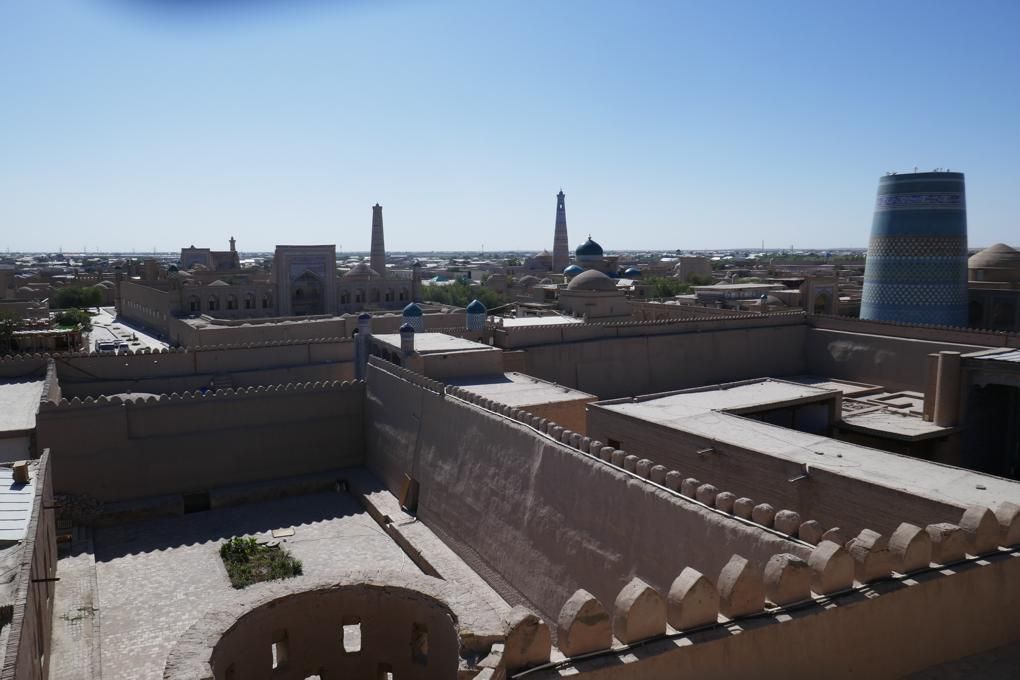
Khiva is one of the most intact Silk Road cities in the world. We arrive as dusk fell, the call to pray ringing out, Khiva resembled an ancient town with clay-coloured houses and glittering minarets enclosed within gigantic fortress walls.
Legend has it that Shem, son of the Biblical patriarch Noah, discovered a well while crossing the desert. Locals flocked to it and when they drank from the well exclaimed khey-vakh! (meaning sweet water) and so the city of Khiva was born.
Khiva became a popular resting place for caravans and merchants crossing the desert. Between the 10th and 14th centuries, it was a crowded, thriving town — another major trading hub on the Silk Road, while in the early 16th century, it became capital of the Khiva Khanate founded by a branch of the Shaybanids (who we’d learned about in Samarkand and Bukhara). During this time, the city ran a bustling slave market that lasted several centuries.
In 1740, Nadir Shah of Persia invaded the region and made Khiva part of the Persian Empire.
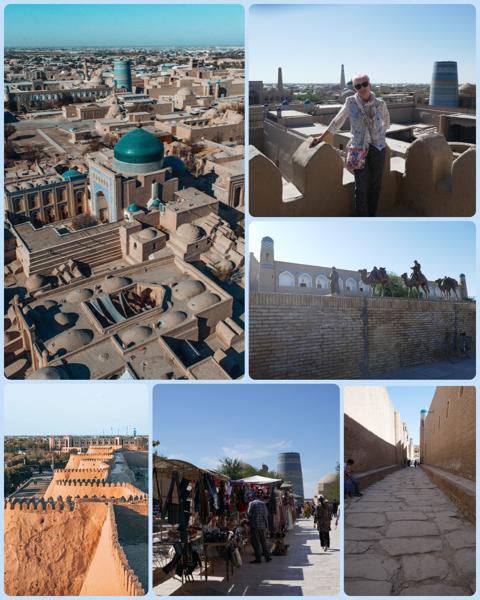
In the 19th century, Khiva was divided into two parts: Itchan Kala (the inner city) and Dishan Kala (the outer city ). The khans (rulers), along with the clergy, high officials, craftsmen and rich merchants, resided in Itchan Kala while ordinary people lived in Dishan Kala.
Today, Itchan Kala is an open-air museum and Central Asia’s first UNESCO World Heritage city. There are over 350 houses inside Itchan Kala, and around 2,600 people still live there. When I wandered around for a short time, in the late evening, it was quite dark, but I could seeing women cooking outside in their tandoor ovens and wondered if I’d stepped back to another century.
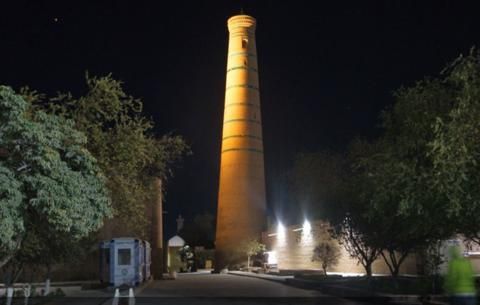
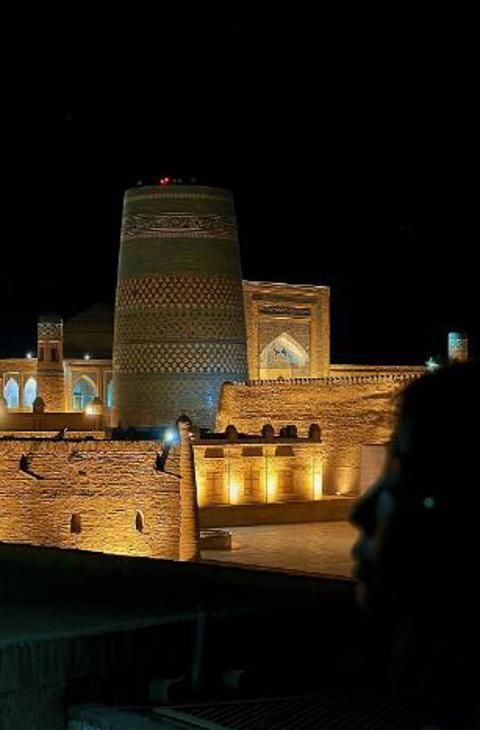
The khan wanted to build an 80-meter tall minaret surpassing the famous Kalon Minaret in Bukhara, but he was killed in battle before construction was completed, leaving the minaret unfinished at 29m tall.
Below: the squat Kalta Minor Minaret, Michael the local Bactrian camel - I’ve never seen such large humps!, views past and present of the Juma Minaret - the oldest in Khiva, dating back to the 10th century, detail of the exquisite tile work of the Kalta Minaret.
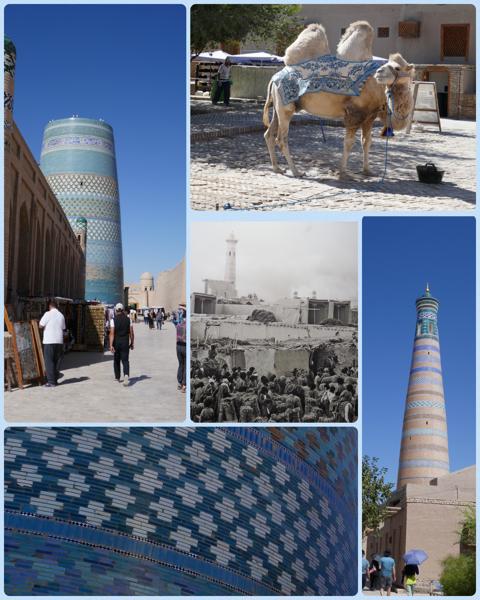
At the heart of the old town the 17th century, Kunha Ark Fortress, former residence of Khiva’s rulers. Wandering around this beautiful complex, gave us a peek into the life of the khans. Buildings included the mint (now a museum displaying the currency minted there), stables and even a prison.
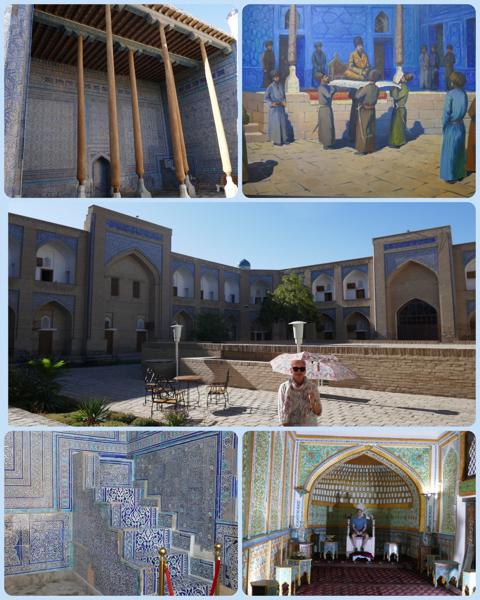
Tosh Hovli Palace (which means a garden of stone), was built to replace Kunya Ark in 19th century, comprises 3 courtyards and 163 rooms.
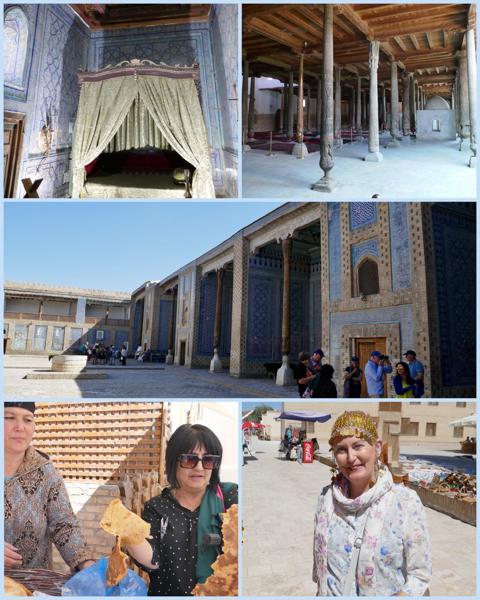
The sumptuous blue tiling of the courtyard surrounds the harem where decorations of balcony ceilings and carvings of wood columns are exquisite with elaborate detailing.
Corridors join the courtyards and buildings, now used as a Museum and to display various artefacts.
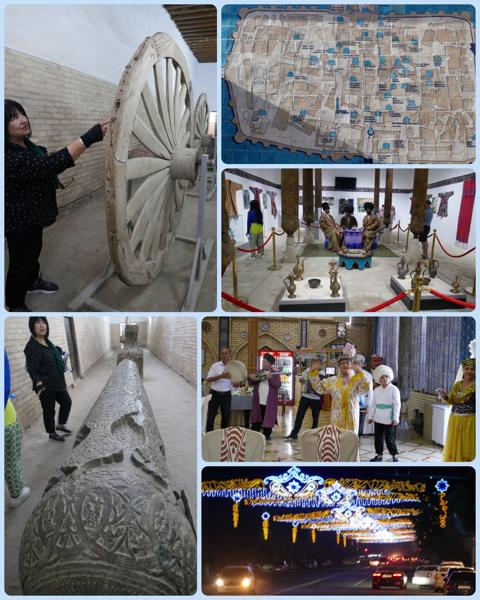
On our final evening in Khiva and Uzbekistan, we enjoyed a short traditional folk show. Even the road to the airport was a highlight.
Uzbekistan was an unbelievable destination, filled with so much history and incredible sights. Tantalising Tashkent, sumptuous Samarkand, beguiling Bukhara and captivating Khiva.
To understand the magic of Khiva, join Alex and Marko - the Vagabond Boys in the short video below - they follow a similar route to my tour (but I didn't indulge in a big night the evening before!). Enjoy strolling through this atmospheric city.
And so my adventure continues - the next Stan is Turkmenistan - a country closed to the rest of the world for a long time. Only around 10-20,000 tourists visit Turkmenistan per year - less than even North Korea.
Posts to be published soon on mysterious Turkmenistan.
